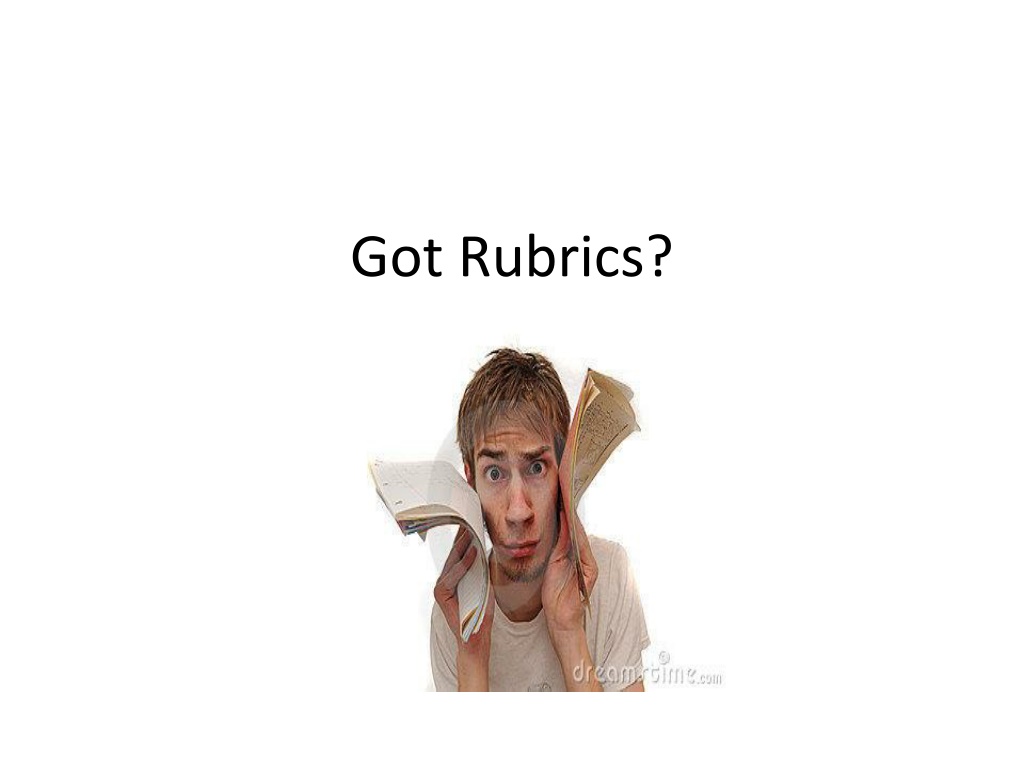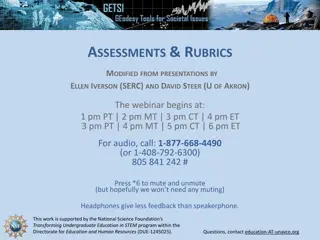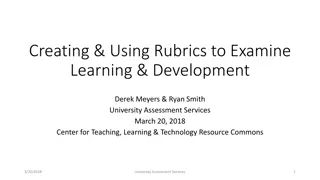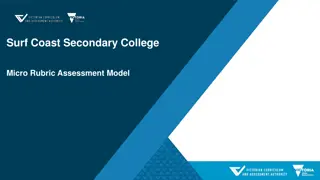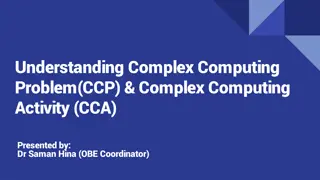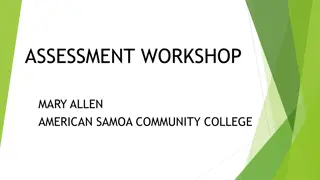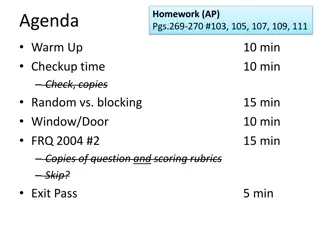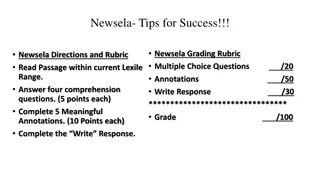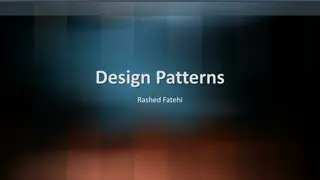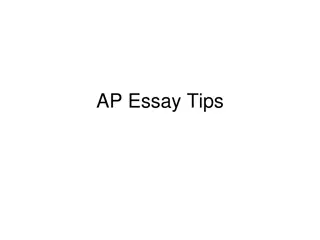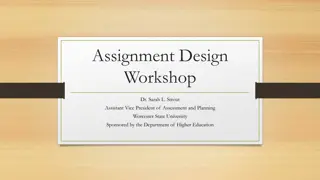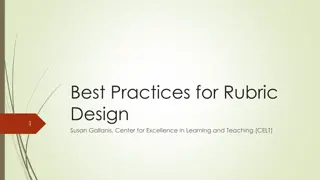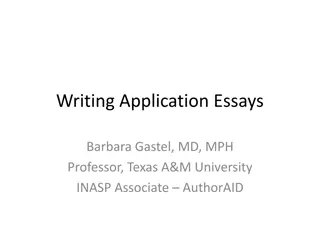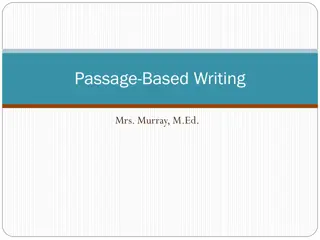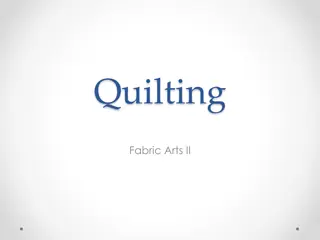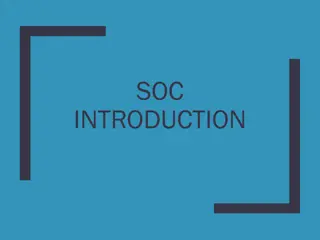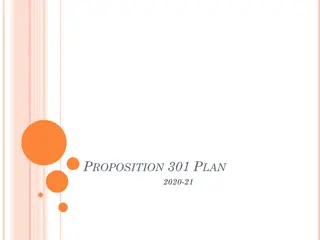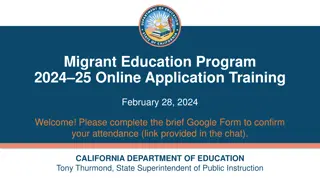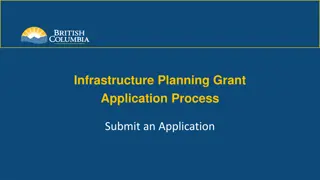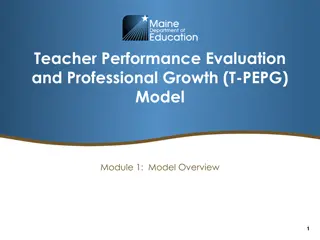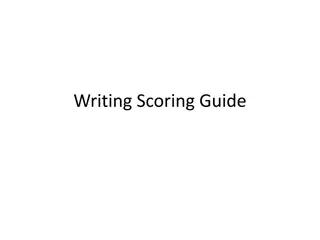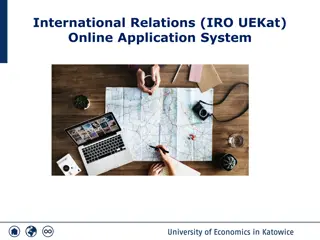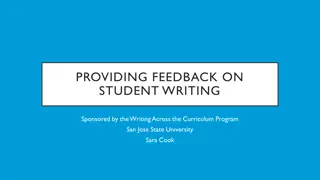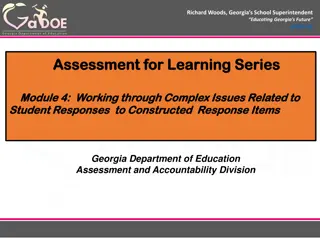Mastering Rubrics: Types, Design, and Application
Understand the essentials of rubrics by exploring various types like checklists, rating scales, Likert-type scales, holistic, and analytic rubrics. Learn about the characteristics of good rubrics and how to create effective scoring guides. Get insights from examples like the University of Pittsburgh's checklist and Irene Clark's holistic rubrics to enhance your assessment strategies.
Uploaded on Sep 26, 2024 | 0 Views
Download Presentation

Please find below an Image/Link to download the presentation.
The content on the website is provided AS IS for your information and personal use only. It may not be sold, licensed, or shared on other websites without obtaining consent from the author. Download presentation by click this link. If you encounter any issues during the download, it is possible that the publisher has removed the file from their server.
E N D
Presentation Transcript
What is a Good Rubric? aka Scoring Guide
Types of Scoring Guides Checklists Rating Scales Likert-type Rating Scales Holistic Rubrics Analytic Rubrics
Checklist (U of Pittsburg) Strengths: Argument and Presentation Clear thesis. Paper is logical and convincing, i.e., solid reasoning throughout. Good introduction, i.e., Interesting and anticipates argument. Good conclusion, i.e., effectively summarizes argument. Well organized. Plentiful and well-chosen evidence supports thesis. Good grasp of key issues. Addresses all aspects of the question.
Rating Scale Argument and Presentation Strongly agree Agree Disa gree Stron gly disagr ee Clear thesis Paper is logical and convincing, i.e., solid reasoning throughout Good introduction, i.e., Interesting and anticipates argument.
Likert-type Rating Scale (J. Bean, Engaging Ideas) Does your essay have a thesis statement at the end of the first paragraph that answers the assigned questions? No thesis or unclear thesis 0 2 3 4 5 6 7 8 9 10 Clear thesis Is your thesis supported with strong argumentation and use of significant details taken from the story? Weak argument/lack of details Strong argument/good details 0 2 3 4 5 6 7 8 9 10
Characteristics of Good Rubrics Aligned with major, complex assignments Makes clear what is valued in the performance or product Contains predetermined, measurable criteria Provides information about the degrees or levels of achievement They are normed
Holistic Rubrics (Irene Clark) A)Papers: Represent a superior, well-polished, level of writing that satisfied all assignment requirements. Thesis is thoughtful, considerably clear, and skillfully supported. Sentences are free of grammatical errors, careless mistakes, and exhibit noticeable variety. (B)Papers: Represent a commendable level of writing that satisfies all assignment requirements. Thesis is thoughtful, clear, and well supported. Sentences are free of major grammatical errors, careless mistakes, and exhibit sufficient variety.
Analytic Rubric (Common Core State Standards Writing Rubric, grades 11-12) 5 Exceptional 4 Skilled 3 Proficient 2 Developing 1 Inadequate Argument The text introduces a compelling claim that is arguable and takes a purposeful position on an issue. The text introduces a precise claim that is clearly arguable and takes an identifiable position on an issue. The text introduces a claim that is arguable and takes a position. The text contains an unclear or emerging claim that suggests a vague position. The text contains an unidentifiable claim or vague position. Claim: The text introduces a clear, arguable claim that can be supported by reasons and evidence Development: Audience: Cohesion: Style and Conventions: Informative 5 Exceptional 4 Skilled 3 Proficient 2 Developing 1 Inadequate 5 Exceptional 4 Skilled 3 Proficient 2 Developing 1 Inadequate Narrative
